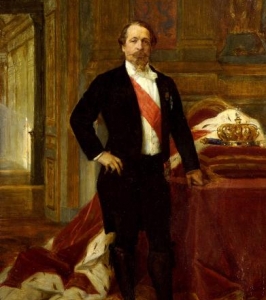Napoleon III
Charles–Louis–Napoléon Bonaparte (Paris, 20 April 1808–Chislehurst, 9 January 1873) was the third son of Louis Bonaparte, Napoleon’s younger brother, and Hortense de Beauharnais, Joséphine’s daughter from her first marriage.
He lived between Switzerland and Italy until 1832, when the death of Napoleon’s son left him heir to his uncle’s imperial crown. From that moment, all of Charles–Louis’ energy was channelled in this direction, arriving in 1836 at an attempted revolt which however failed, leading first to his arrest and then, at his mother’s intercession, to his exile to the United States.
.He soon returned to Europe and his mother died. Partly thanks to the wealth that he inherited from her, he was able to organize, in 1840, a second attempt to take power, but again failed and he was arrested for the second time. He escaped prison in 1846 and fled to England, returning to France only after the events of 1848 when he presented himself in the elections and became President of the Second French Republic. This phase ended in 1852 when, in a dictatorial turn, Charles–Louis changed the constitution and declared himself French Emperor with the name Napoleon III.
His government policy was characterized by intense work toward the modernization of the country as well as, in foreign policy, his alliance with England, his support of the Risorgimento uprisings in Italy and the intensification of colonial expansion.
In 1870 he led an ill–prepared French army to fight against the Prussians: defeated, he went to England where he remained until his death.










